|
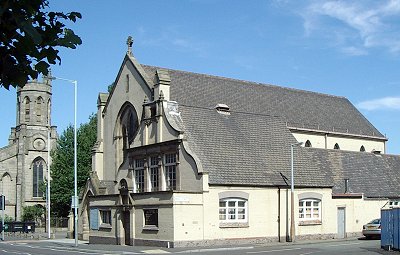
Listing: Locally listed in 2004. Began as a chapel in 1833 in gothic
style and enlarged in 1845. Brick with stone and buff terracotta
detailing. John Henry, later Cardinal, Newman, was assistant priest here
in c.1849.
Comment: St. Mary's (the Church of England church to the left of
the photo above) is statutorily listed but Holy Trinity is not. Attempts
were made to have it statutorily listed in 2003, mainly on the grounds that one
of the Pugins once
did some work here. But what he did has almost vanished, so local listing
is all this interesting building gets.
This is the main Roman Catholic church in Bilston. St. Mary's, seen to
the far left here, is Church of England. Note the different orientations -
but this is almost certainly not theological but connected with the size and
shape of the available site.
The part of the building to the right, with the rather elaborate, gabled
facade, was originally the school. It is now used as a church hall.
The complex includes a fairly modern (1960s?) presbytery behind the church and a
modern social club to the rear. It always has been one of the great
community centres of Bilston and remains so today.
After Catholic emancipation in 1829, when Catholics were allowed to build
public churches, Bilston was not slow in joining in. But it is said that
the immediate motivation for the promotion of a new church was that, during the
disastrous cholera epidemic of 1832, three Catholic priests from Wolverhampton,
Fathers O'Sullivan, Mostyn and Ross, did such sterling work in the town that
local Catholics were moved to ask for their own church. Father O'Sullivan
seems to have been a prime mover in this and he managed to collect £1,800 for
the cause. The site was bought from a Mrs. Price, work started and the church
was opened on 11th September 1834. The first priest was Father Thomas Sing
who soon got Father George Fox as an assistant priest. It was Fox who
promoted the building of the school (the building with the curly gables to the
right of the photo at the head of this page).
In 1845 it was decided to enlarge the church by the addition of a chancel.
This was designed by Augustus Welby Pugin - but it seems that, if there every
was any typically Pugin elaboration in its decoration, it has long since gone.
In 1849 there was another disastrous outbreak of cholera when the priest,
Father John Sherlock, temporarily in charge due to the illness of the parish
priest, distinguished himself by his selfless devotion, which included carrying
the sick to hospital on his back. The event is also remembered for the
fact that one of the priests who came to assist him was later to become Cardinal
Newman. The statutory listing refers to him as an Assistant Priest but it
was only a temporary appointment and Newman was in Bilston for about three
weeks.
The church and its school was an important educational and social centre and
remains so to this day, thought the school has moved out to a new site and its
building is used as a church hall.
The church and hall have been in a bad way recently. The parish is not
a rich one but the congregation made great efforts and raised the sums necessary
to repair the church roof, make the church wind and watertight, and to
redecorate it throughout. The work was finished in 2008 and the parish
then moved on to restoring the hall.
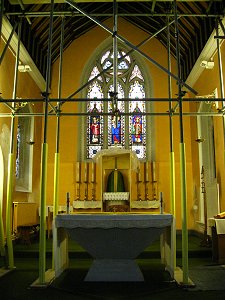 |
For many months the congregation had to sit under a great square
arch of scaffolding whilst repairs and restoration took place. |
| But when it was all over the church looked as good as it ever
has done. |
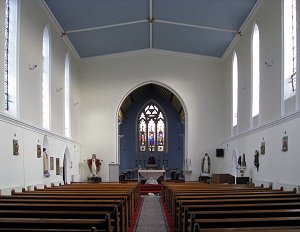 |
 |
This small side chapel, near the east door, now looks very fine
and splendid for christenings. |
| The east window was made by Thomas Waite in 1846 and shows Our
Lady and Child in the centre light, with St. Thomas a Becket and St
Augustine in the other two. |
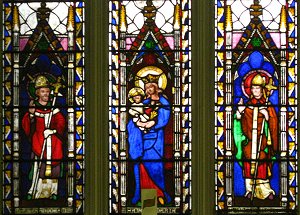 |
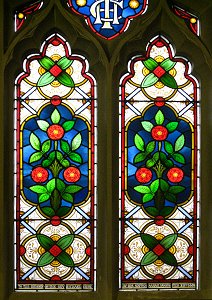 |
This window is a memorial to the Rev. Michael Crewe and was
presented by his sister, Sara Woods. It is dated Feb. 22nd
1889. With its clear and simple design, and its rich colours,
it is quite striking. |
| The church as some good tiles which may date from 1845. |
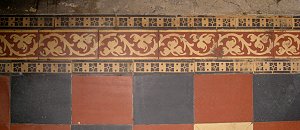 |
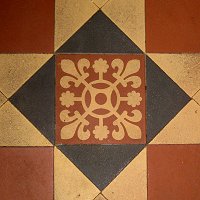

|